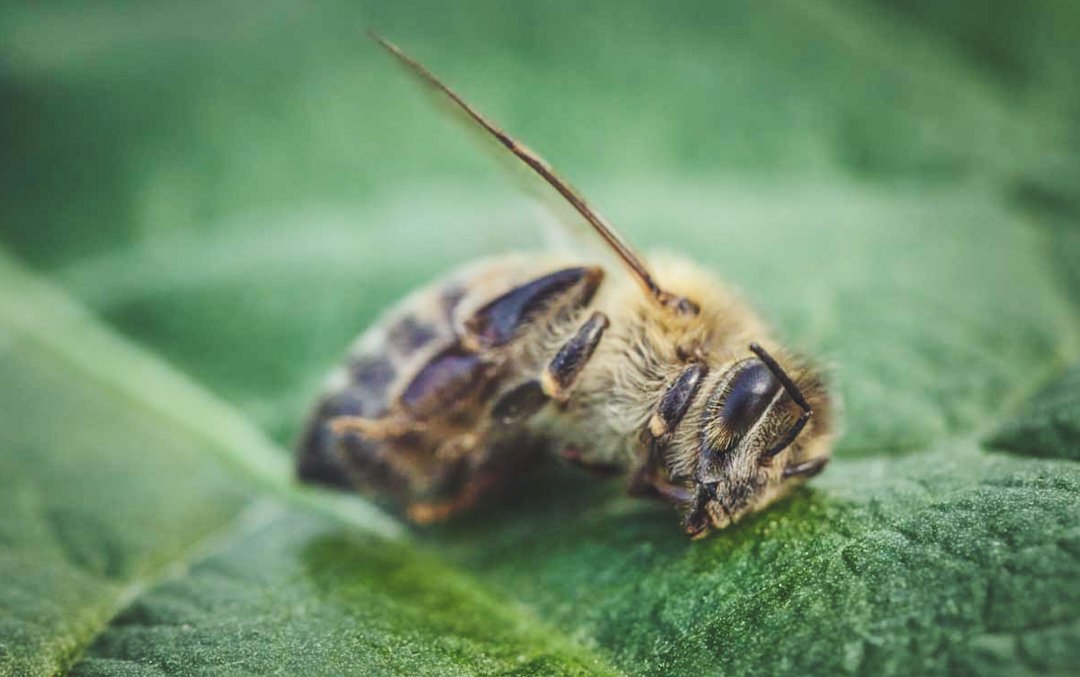#20 Bee Colony Collapse
Did you know that one in every three bites of food you eat is made possible from pollinating bees? Or, that the estimated annual value of work done by bees in the US is between $235 and $577 billion dollars? Unfortunately, due to a number of environmental causes, bee colony collapse is on the rise. Currently, eight species of bees are on the endangered species list. Without bees, our lives and food system would look dramatically different.
What’s all the Buzzz about?
Producing honey is just one small value bees bring to our food supply and our lives. Vast amounts of agriculture depend on bees for the pollination of fruits, vegetables, and other fauna. Without bees providing these critical tasks, our planet as we know it, would cease to exist. In April 2016, researchers reported that beekeepers lost 44% of their bee colonies in the prior 12 months. That’s up from 42.1% in 2015 and 39% in 2014. Colony Collapse Disorder is a phenomenon that occurs when the majority of worker bees in a colony disappear and die, leaving behind a queen and a few nurse bees to care for the remaining immature bees – causing the colony to collapse. If Colony Collapse continues, it is estimated that managed honey bees will disappear by 2035. Colony Collapse Disorder was recognized as a serious threat in 2006. It is believed that pesticides, fungicides and viruses are the leading factors behind Colony Collapse.
Facts on Bees:
Many factors are influencing the decline of bees; including habitat fragmentation, increased use of neonicotinoid pesticides, colony collapse disorder, and climate change.
Of the 100 crops that account for 90% of the food eaten around the globe, 71 of those rely on bee pollination.
There are 369,000 flowering plant species, and 90% of them are dependent on insect pollination.
In the United States, pollination contributes $20–$30 billion in agricultural production annually.
There are more than 20,000 distinct bee species around the world – and more than 4,000 in the U.S. alone.
How Can I Make An Impact?
Tier 1: Global Goodness
Say, “no more” to spraying pesticides, herbicides, and chemicals around your home. Do your part by allowing your home to be a chemical free zone for bees to roam.
Take a break from weeding. Have dandelions or other flowers growing in your lawn? Let them stay so that bees have food.
Want to make direct change? Plant a tree. Grab some seedlings and get to work. Not sure where to plant? If you don’t have access to yard space, research areas in your community that allow tree planting.
Tier 2: Planet Protector
All of Tier 1.
Buy organic. The more organic products you purchase – the more sustainable life will be for bees.
Have a deck or yard space that could use a little color? Plant flowers or flowering shrubs to feed the bees – and remember – no chemicals!
Leave a water basin out for bees to drink. Putting a few stones in the water helps prevent bees from drowning.
Tier 3: Earth Angel
All of Tiers 1 & 2.
Plant your garden with native and bee-friendly plants.
Bee informed. Do your research on the severity of the bee decline.
Bees are not dangerous – they forage flowers for the good of our Earth.
Have land? Start a bee colony of your own; bees are surprisingly easy to maintain. Research what tools are necessary to have a successful bee hive.
Choose to be an Ambassador for Change, and always Spread Love and Spread Light.
FACTS REFERENCES:
https://www.epa.gov/pollinator-protection/colony-collapse-disorder
https://earthjustice.org/blog/2015-april/11-amazing-reasons-to-save-the-honeybees
https://phys.org/news/2016-01-complex-worldwide-bee-declines.html
https://www.earthday.org/fact-sheet-bees/
https://phys.org/news/2016-01-complex-worldwide-bee-declines.html


